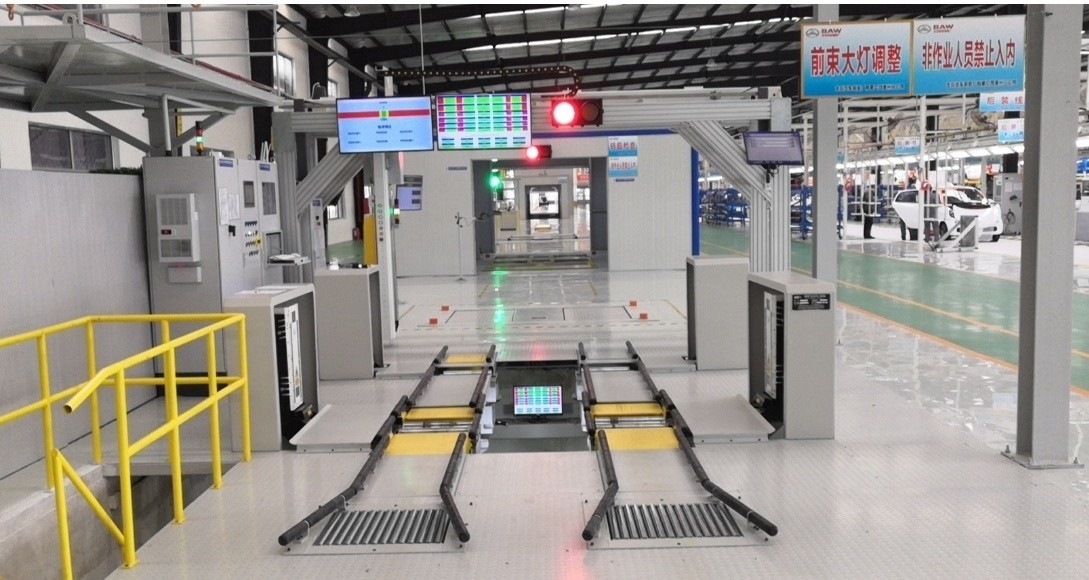Dynamic 4-wheel alignment is a very precise test instrument. Its purpose is to detect the basic parameters of the 4 tires of the vehicle, compare them with the factory parameters, and adjust them to make the performance of the vehicle more consistent with the pre-factory conditions, so as to ensure easy handling, reduce tire damage, and drive smoothly. Let's talk about the function and application standards of this test instrument.
1. Vehicle inspection before product positioning
(1) Check the car's tire bearings, suspension, steering system, etc. to make sure there is no gap or damage.
(2) The tread depth of the same model of tires is only allowed to differ by 2mm, and the tire inflation pressure meets the requirements.
(3) The vehicle equipment is the net weight as installed.
2. Dynamic 4-wheel alignment product positioning requirements
(1) Install the car on the fixed lift. The car should be tilted into the lift so that the center of the car coincides with the center of the lift and the turntable.
(2) If the vehicle specifications need to be changed.
(3) The control should be carried out strictly according to the process of the alignment instrument instructions, and no omissions should be made. The relevant contents of the tire verification should be input into the test instrument according to the requirements.
(4) The adjustment of the basic parameters of each wheel product positioning (toe, camber angle) should comply with the provisions of the "Maintenance Manual" of each model. Those that do not meet the standard requirements during the inspection should be adjusted (except for those that cannot be adjusted on the original vehicle).
(5) The positioning results of the dynamic 4-wheel alignment instrument product should be saved and printed.
Function: Improve safe driving, reduce brake disc wear, keep the steering wheel straight when driving straight, keep driving in a straight line, the steering wheel automatically returns to the right position after turning, improve driving control, reduce combustion consumption, reduce wear of suspension components, etc.
The above are the functions and application criteria of the dynamic 4-wheel alignment instrument. The operation process must be carried out according to the requirements. Do not operate it arbitrarily according to your own ideas. Once the operation is wrong, it may cause safety hazards.

Related Industry Knowledge
- ADAS advanced auxiliary driving calibration equipment calibration purpose
- What is the function of the high-speed ABS brake test rig?
- Introduction to non-contact four-wheel aligner
- Main configuration of ABS brake table
- Safety inspection project
- Comprehensive drum test bench product introduction
- Tire pressure equipment operating instructions
- Non-contact four wheel aligner operating procedures
- Application of laser measurement technology in automobile four wheel aligner
- Dynamic four wheel aligners have formed a trend
- Large vehicle 4 wheel alignment can check the problem
- Dynamic 4 wheel alignment manufacturer teaches you 5 tips to do 4 wheel alignment
- How to maintain a dynamic 4 wheel alignment instrument
- Automobile 4 wheel alignment selection knowledge
- What are the benefits of a dynamic 4-wheel alignment for a car?
- Detection method of large vehicle 4 wheel alignment instrument
- What are the precautions for choosing a 4-wheel alignment instrument?
- What does the inspection of the final assembly inspection line include?
- What are the inspection items and corresponding inspection contents of the general assembly inspection line?
- Market prospects for vehicle inspection
